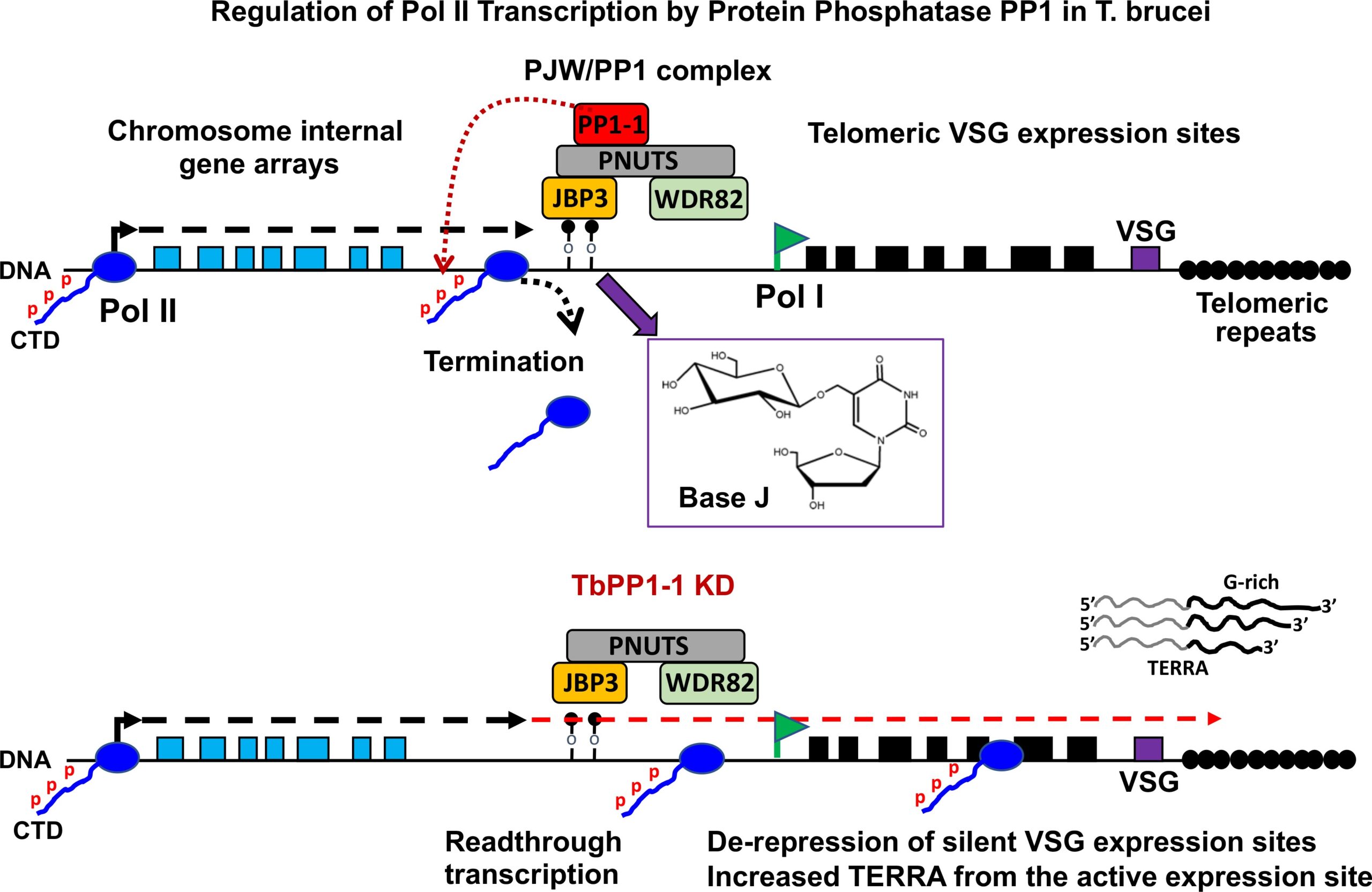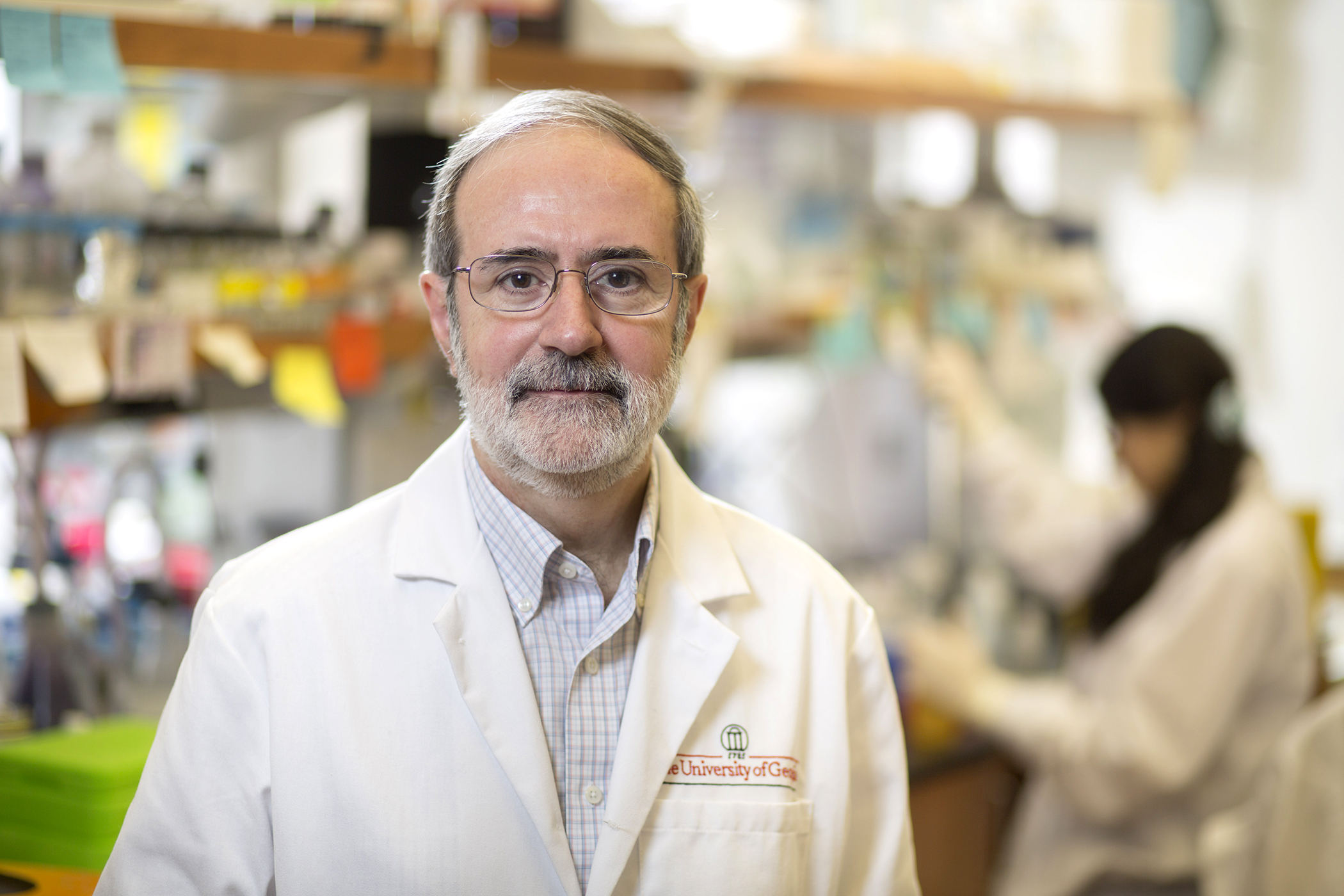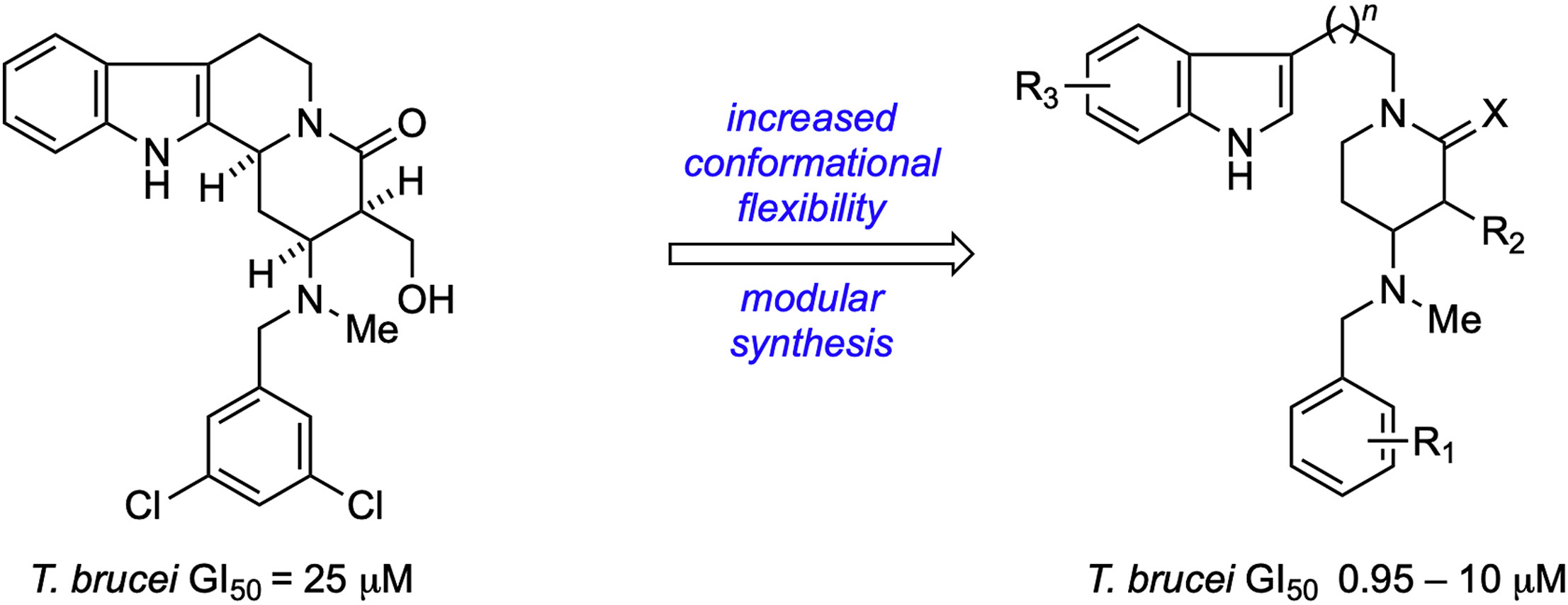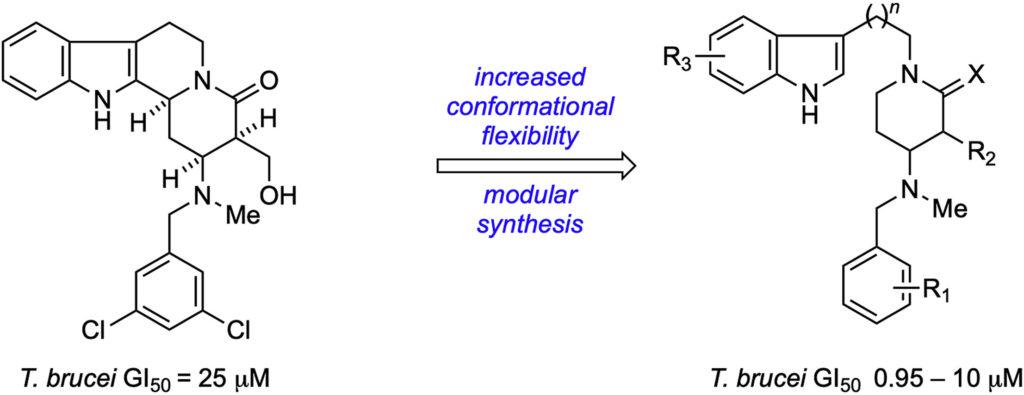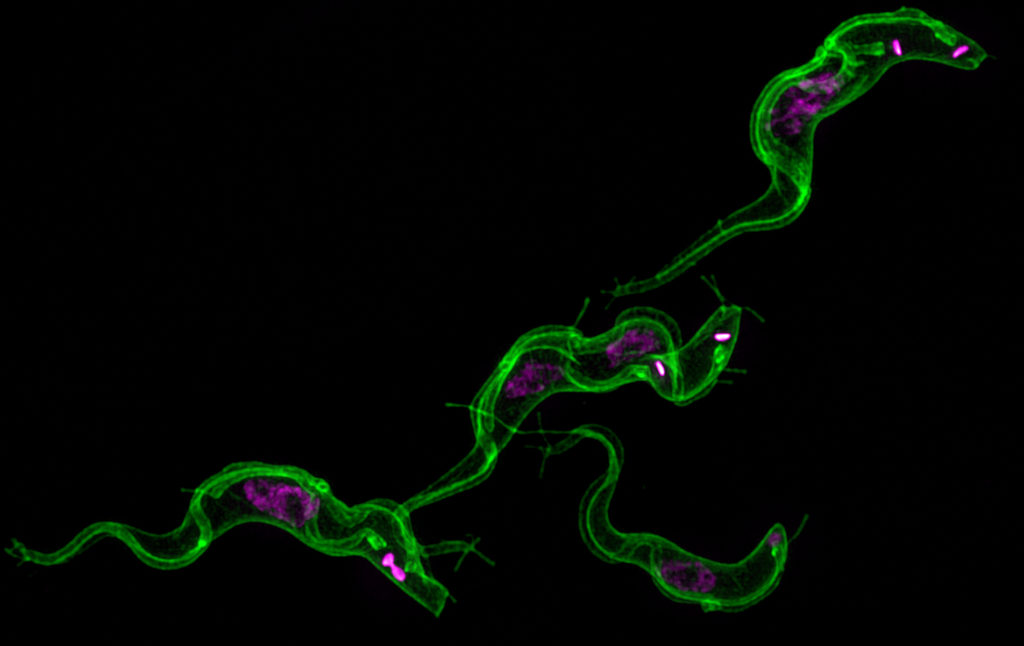Protein phosphatase PP1 regulation of RNA polymerase II transcription termination and allelic exclusion of VSG genes in trypanosomes
The genomes of Leishmania and trypanosomes are organized into polycistronic transcription units flanked by a modified DNA base J involved in promoting RNA polymerase II (Pol II) termination. We recently characterized a Leishmania complex containing a J-binding protein, PP1 protein phosphatase 1, and PP1 regulatory protein (PNUTS) that controls transcription termination potentially via dephosphorylation of Pol II by PP1. While T. brucei contains eight PP1 isoforms, none purified with the PNUTS complex, complicating the analysis of PP1 function in termination. We now demonstrate that the PP1-binding motif of TbPNUTS is required for function in termination in vivo and that TbPP1-1 modulates Pol II termination in T. brucei and dephosphorylation of the large subunit of Pol II. PP1-1 knock-down results in increased cellular levels of phosphorylated RPB1 accompanied by readthrough transcription and aberrant transcription of the chromosome by Pol II, including Pol I transcribed loci that are typically silent, such as telomeric VSG expression sites involved in antigenic variation. These results provide important insights into the mechanism underlying Pol II transcription termination in primitive eukaryotes that rely on polycistronic transcription and maintain allelic exclusion of VSG genes.
Rudo Kieft, Yang Zhang, Haidong Yan, Robert J Schmitz, Robert Sabatini. Nucleic Acids Res. 2024 May 23:gkae392. doi: 10.1093/nar/gkae392.

